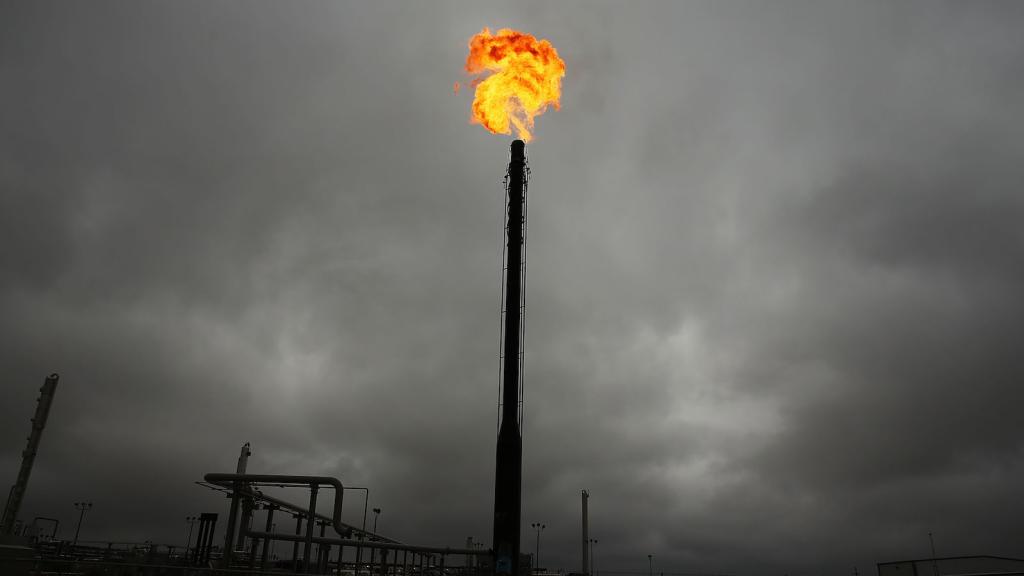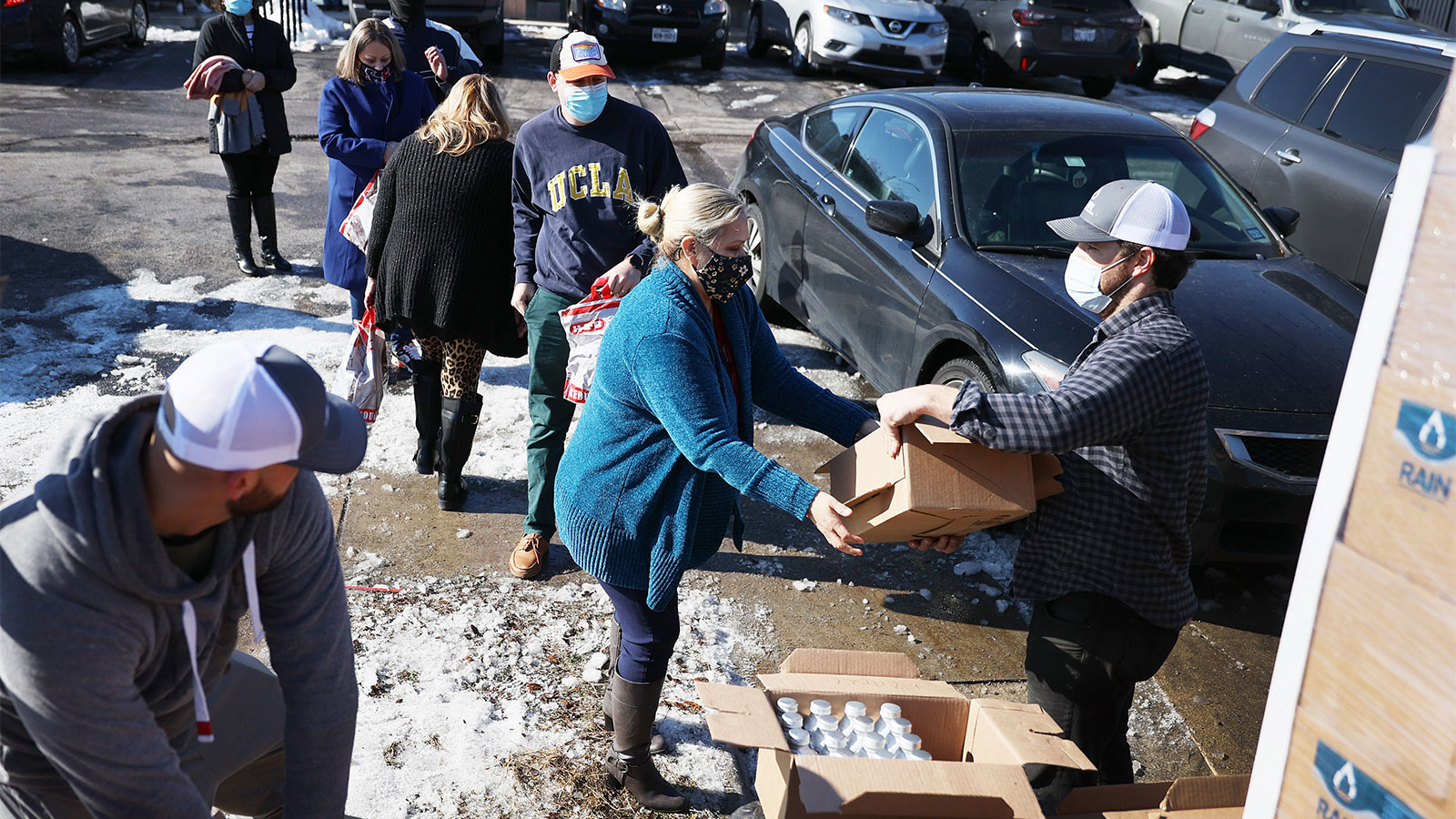When a severe winter storm tore through Texas last Monday, Kirby Lynch lost water and power in her RV home in Collin County. The snow came up to her ankles — higher than she’d ever seen in her life. Nonetheless, Lynch’s first instinct was to get to work. Lynch is one of two organizers behind North Texas Rural Resilience, a mutual aid collective that services rural areas outside of the Dallas-Fort Worth area.
In the wake of the storm, Lynch and Sakiewicz delivered groceries and supplies and found hotel rooms for people without housing, despite bad roads and store closures. North Texas Rural Resilience is one of a plethora of mutual aid organizations that sprang into action in the wake of the storm across Texas. Similar organizations, including Austin Mutual Aid, DFW Mutual Aid (in the Dallas-Fort Worth area), and Mutual Aid Houston, have been organizing on the ground and through social media to redistribute funds to people in need, house people from homeless encampments in hotels, and organize supply drives and deliveries of food and water to communities impacted by power outages, freezing temperatures, and water and food shortages.
Extreme weather (including, potentially, extreme cold) will only accelerate as climate change progresses, and groups facing structural inequality — including low-income communities, communities of color, and people with precarious housing situations — feel the burden of these extreme events hardest. With “solidarity, not charity” as their guiding principle, these mutual aid groups aimed to lighten that burden and fill the gap in services left by the government in the days immediately following the storm.
Lynch got into mutual aid after a friend launched Feed the People Dallas, another mutual aid group that launched in April 2020. After working in Dallas for a while, she realised that there was a need for mutual aid in her own community, which struggles with food insecurity, and launched North Texas Rural Resilience with Lucy Sakiewicz, another Collin County resident, in September. She started posting notices on Craigslist, getting referrals from friends who were social workers, and finding people who needed assistance through Instagram. Over time, she built up a list of people who regularly needed groceries and other supplies. Lynch and Sakiewicz started organizing weekly grocery deliveries to people who needed food, as well as other services like book drives and rides to the polls for the election. Regular monthly donors covered about a third of their costs, and Lynch and Sakiewicz footed the rest of the bill themselves.
In the wake of the storm, Lynch and Sakiewicz said they saw more first-time donors than ever before. They weren’t the only ones seeing a record influx of donations. Austin Mutual Aid spent $300,000 housing people in the wake of the pandemic, an amount they were able to crowdfund in part because infographics listing their Instagram account went viral on social media. (Disclosure: This reporter donated $25 to Austin Mutual Aid last week.) Tammy Chang of Mutual Aid Houston said donations skyrocketed in the wake of the storm; Chang decided to create a GoFundMe campaign to collect donations after exceeding the Venmo payment limit. By the next morning, the campaign had amassed $130,000 — “more money than I’d ever seen in my entire life,” they said. As of Thursday, the GoFundMe campaign has collected more than $294,000.
Mutual Aid Houston hasn’t always been this large of an organization. Chang started the group as a senior in college in March 2020 as a Twitter account designed to respond to the COVID-19 pandemic. At first, it didn’t gain much traction — they mainly used it as a place to share resources and amplify individual requests for funds. But during the summer’s Black Lives Matter protests, the group started to grow — as people were arrested at protests, Chang and the other organizers behind Mutual Aid Houston started to use the page to organize support for protestors who had been arrested. Soon, Mutual Aid Houston had amassed a large enough following to start collecting donations for direct aid days — daylong crowdfunding campaigns to give money to anyone living in the Houston area who needed it for groceries, medical bills, and rent. The only requirement was that the requester live in the Houston area, said Chang — “we aren’t means-testing,” or asking recipients to prove eligibility.
With such a massive influx of money, Chang and the other organizers at Mutual Aid Houston decided that the best thing to do in the wake of the storm would be to meet immediate need by giving out direct cash payments of $100 to people on their request list. “We figured that this $100 could go to anyone who needs food, water, anything really urgent,” said Chang. As of Wednesday, $197,000 of the money raised on GoFundMe had been given to 1,970 Houstonians in just 72 hours. In addition to the direct cash aid, Mutual Aid Houston is also organizing supply distribution sites, collecting canned goods, water, personal protective equipment, and sanitary and baby supplies for people in need.
Not asking for proof of income or hardship is a core tenant of mutual aid, according to Chang and Sakiewicz. Chang says they find that many people who receive aid from Mutual Aid Houston end up passing it forward — either by applying to volunteer with the group or donating to future campaigns. To Chang, this reflects the ethos of solidarity within the community: “Take what you need, give what you can.” On top of that, organizers from Mutual Aid Houston and North Texas Rural Resilience alike are already members of the community — and for Sakiewicz, that is a big part of why their work is well positioned to respond to a crisis like a winter storm. “We spend all our time and resources directly with the people,” said Sakiewicz. “It’s the people next door, the people in our neighborhoods, so we’re fully positioned to be ready when a crisis happens. Who better to mobilize the community than people who are already in the community?”
Austin Graham, a 21-year-old volunteer with Austin Mutual Aid, spent the hours and days following the storm driving to homeless encampments around the city, trying to rescue people exposed to the elements. Austin Mutual Aid covered the cost of their hotel stays, and in the days following the freeze Graham says they ferried more than 130 people from encampments to hotel rooms, amid freezing conditions and treacherous roads. Without the hotel stays, Graham says they fear many of the homeless people they served would have been left to die in the cold, given the lack of intervention from the city.
Chang said they haven’t seen much outreach from the county, city, or state government either, other than the opening of warming centers and a few water distribution sites. For Chang, the work of Mutual Aid Houston is about filling the gap left behind by the state. “We can’t rely on our representatives to send help,” they said. “We have to take care of each other.”
For Sakiewicz, the work is personal. “As a single mom who’s struggled financially, and I’m also a person in recovery from opiates,” she said, tearing up slightly, “if I can help love someone and get them to a place where they can help themselves and feel safe enough to do better and be who they want to be, then I have done my job in this world.”



